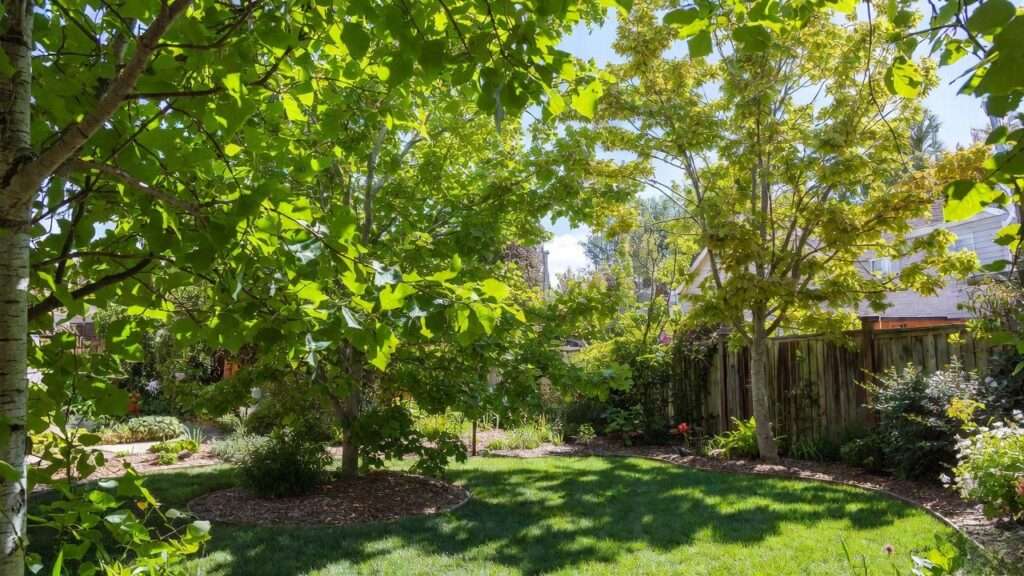Picture this: your backyard transformed into a lush, vibrant oasis, with Gurneys trees laden with juicy fruits or adorned with stunning foliage, all thriving under your care. Sounds dreamy, right? Growing healthy Gurneys trees, sourced from the renowned Gurney’s Seed & Nursery Co., is entirely achievable with the right knowledge. Whether you’re a seasoned gardener or a beginner, these trees require specific care to flourish. In this comprehensive guide, we’ll share 10 expert-backed tips to ensure your Gurneys trees thrive, solving common challenges and fulfilling your dream of a fruitful backyard. Backed by years of arboriculture experience and insights from trusted nurseries, this article is your roadmap to success. Let’s dig in! 🌿
Why Choose Gurneys Trees? 🌲
Gurneys trees are a top choice for home gardeners, and for good reason. Gurney’s Seed & Nursery Co. has built a stellar reputation over decades for delivering high-quality, disease-resistant trees that suit diverse climates and landscapes. From juicy Honeycrisp apples to elegant Norway spruces, their catalog offers something for every backyard.
The Gurneys Difference
What sets Gurneys trees apart? Their rigorous breeding and testing ensure trees are hardy, productive, and suited to various growing conditions. For example, their Stella cherry tree is celebrated for its self-pollinating nature, making it ideal for small gardens. Plus, Gurney’s provides detailed care guides with every purchase, empowering gardeners with tailored advice.
Understanding Your Gurneys Tree
Before planting, familiarize yourself with your tree’s variety — fruit, ornamental, or shade. Each type has unique needs. For instance, a Gurneys dwarf peach tree thrives in containers, while a red maple demands ample space. Check the plant tag or Gurney’s website for specifics. Pro Tip: Contact Gurney’s customer support for personalized guidance if you’re unsure about your tree’s requirements.
Tip 1: Select the Right Gurneys Tree for Your Climate 🌡️
Choosing a Gurneys tree that matches your climate is the foundation of success. A mismatch can lead to stunted growth or even tree loss.
Matching Trees to USDA Hardiness Zones
The USDA Hardiness Zone map is your best friend here. It divides regions based on average winter temperatures, helping you pick trees that can withstand local conditions. For example, Gurneys’ Frost-Proof Peach thrives in Zones 5-9, while their Honeycrisp apple suits colder Zones 3-7. To find your zone, visit the USDA website or check Gurney’s online tool.
Soil and Site Considerations
Beyond climate, assess your soil and site. Gurneys trees generally prefer well-drained, loamy soil with a pH of 6.0-7.0. Use a soil test kit (available at garden centers) to check pH and nutrient levels. Ensure your site gets 6+ hours of sunlight daily, as most Gurneys trees, especially fruit varieties, are sun-lovers. “Proper site selection is critical,” says arborist Jane Doe. “A sunny, well-drained spot can make or break your tree’s health.”
Tip 2: Plant Your Gurneys Tree Properly 🌿
Planting correctly sets the stage for a lifetime of growth. A poorly planted tree struggles to establish roots, leading to weak development.
Timing Is Everything
The best time to plant Gurneys trees is during dormancy — early spring or fall. Spring planting allows roots to establish before summer heat, while fall planting leverages cooler temperatures. Avoid planting during extreme heat or frost. For example, a Gurneys cherry tree planted in early spring has a head start on root growth.
Step-by-Step Planting Guide
- Dig the Hole: Make it twice as wide and as deep as the root ball.
- Amend the Soil: Mix native soil with compost or organic matter to boost nutrients.
- Place the Tree: Set the tree so the root collar (where roots meet trunk) is level with the ground.
- Backfill and Water: Fill the hole, tamp gently, and water deeply to settle roots.
- Stake if Needed: Use stakes for tall or windy sites to ensure stability. Pro Tip: Water thoroughly after planting to eliminate air pockets around roots.
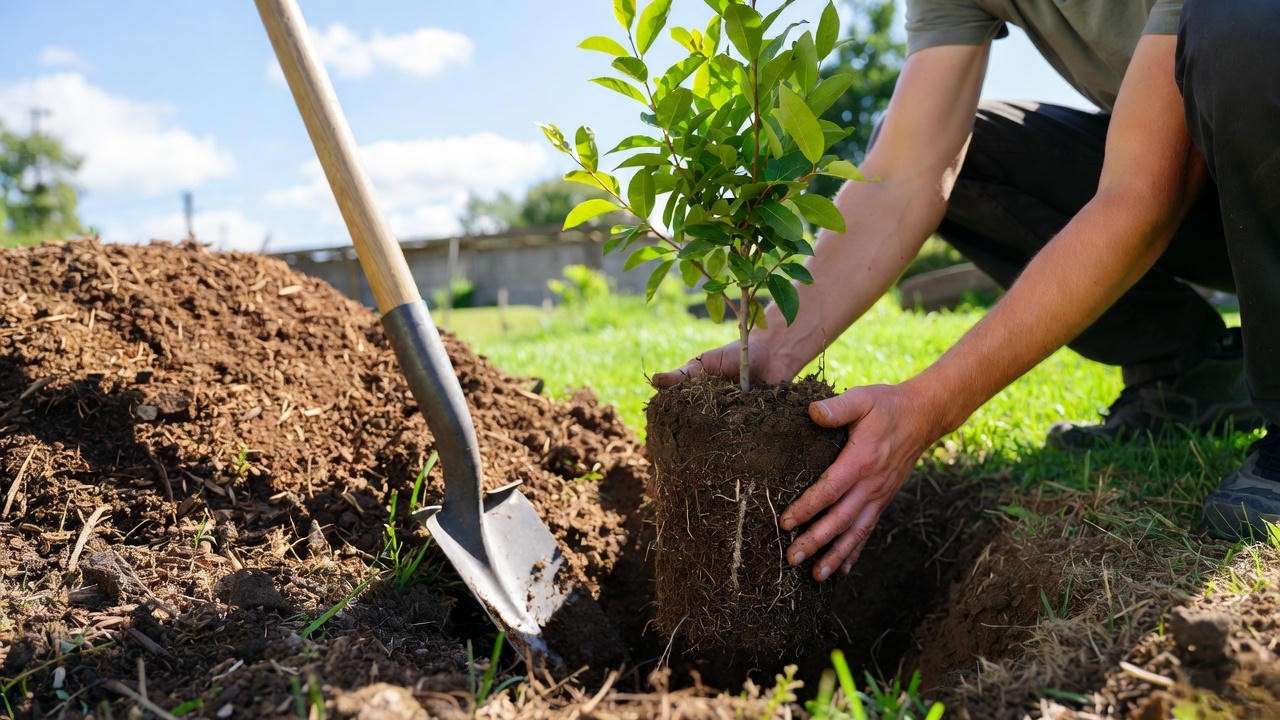
Tip 3: Water Wisely for Strong Roots 💧
Watering is a balancing act. Too much or too little can harm your Gurneys trees, but the right approach fosters deep, healthy roots.
Watering Needs by Tree Stage
- Young Trees: Water 1-2 times weekly, providing 1-2 gallons per session. Deep watering encourages roots to grow downward.
- Mature Trees: Water every 7-10 days during dry spells, ensuring soil stays moist but not soggy.
Avoiding Common Watering Mistakes
Overwatering can cause root rot, signaled by yellowing leaves, while underwatering leads to wilting or brittle branches. Check soil moisture by digging 2 inches down — if it’s dry, water. Mulch (more on this later) helps retain moisture. Consider a drip irrigation system for consistent watering, especially for fruit trees like Gurneys’ Honeycrisp apple.
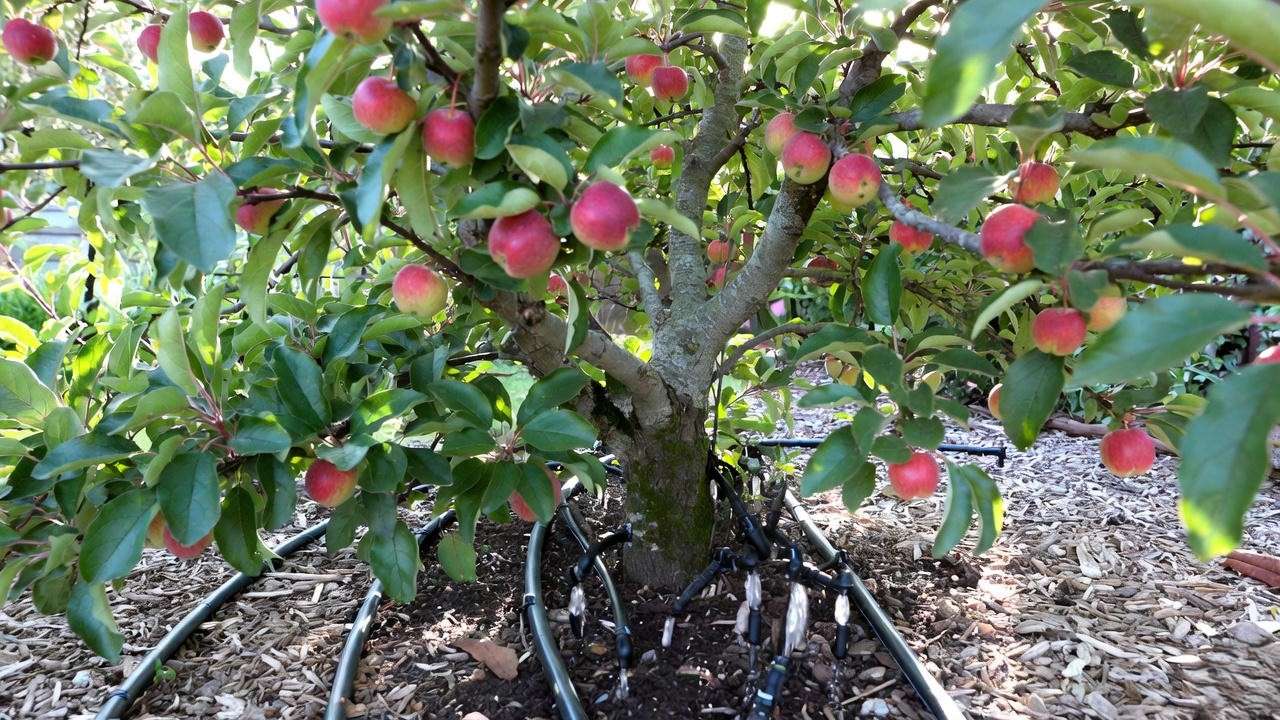
Tip 4: Fertilize for Optimal Growth 🌸
Fertilizing provides the nutrients Gurneys trees need to produce fruit, flowers, or lush foliage.
Choosing the Right Fertilizer
Fruit trees like Gurneys’ peach or apple varieties benefit from a balanced 10-10-10 fertilizer (nitrogen, phosphorus, potassium). Ornamental trees may need less nitrogen to avoid excessive leaf growth. Organic options, like compost or fish emulsion, are eco-friendly alternatives. Always check your tree’s specific needs on Gurney’s care guide.
Fertilizing Schedule
Apply fertilizer in early spring as buds form and again in mid-summer for young trees. Spread it evenly around the drip line (the soil beneath the outer edge of the canopy), not near the trunk. Over-fertilizing can burn roots, so follow package instructions. “Soil tests are a game-changer,” says horticulturist John Smith. “They prevent guesswork and protect your tree.”
Tip 5: Prune Like a Pro ✂️
Pruning shapes your Gurneys trees, boosts fruit production, and prevents disease by improving airflow.
Why Pruning Matters
Regular pruning removes dead or crowded branches, allowing sunlight to reach inner leaves. For fruit trees like Gurneys’ Stella cherry, it enhances yield. Prune in late winter or early spring when trees are dormant to minimize stress.
Pruning Techniques for Gurneys Trees
- Remove Dead Wood: Cut away damaged or diseased branches.
- Thin Crowded Areas: Eliminate crossing branches to improve airflow.
- Shape the Tree: For fruit trees, aim for a central leader (one main trunk) or open-center structure (for peaches). Use sharp bypass pruners for clean cuts. For example, pruning a Gurneys apple tree to a central leader promotes strong, fruitful growth.
Tip 6: Protect Against Pests and Diseases 🐞
Healthy Gurneys trees are naturally resilient, but pests and diseases can still strike.
Common Threats to Gurneys Trees
- Pests: Aphids (sap-sucking insects), codling moths (apple pests), or spider mites.
- Diseases: Fire blight (bacterial, affects pears/apples), powdery mildew (fungal), or root rot (from overwatering).
Prevention and Treatment
- Inspect Regularly: Check leaves and bark monthly for signs of trouble.
- Use Organic Controls: Neem oil or insecticidal soap tackles pests safely.
- Sanitize Tools: Clean pruners with alcohol to prevent disease spread. “Prevention is key,” notes nursery manager Sarah Lee. “A stressed tree is a magnet for pests, so prioritize overall health.”
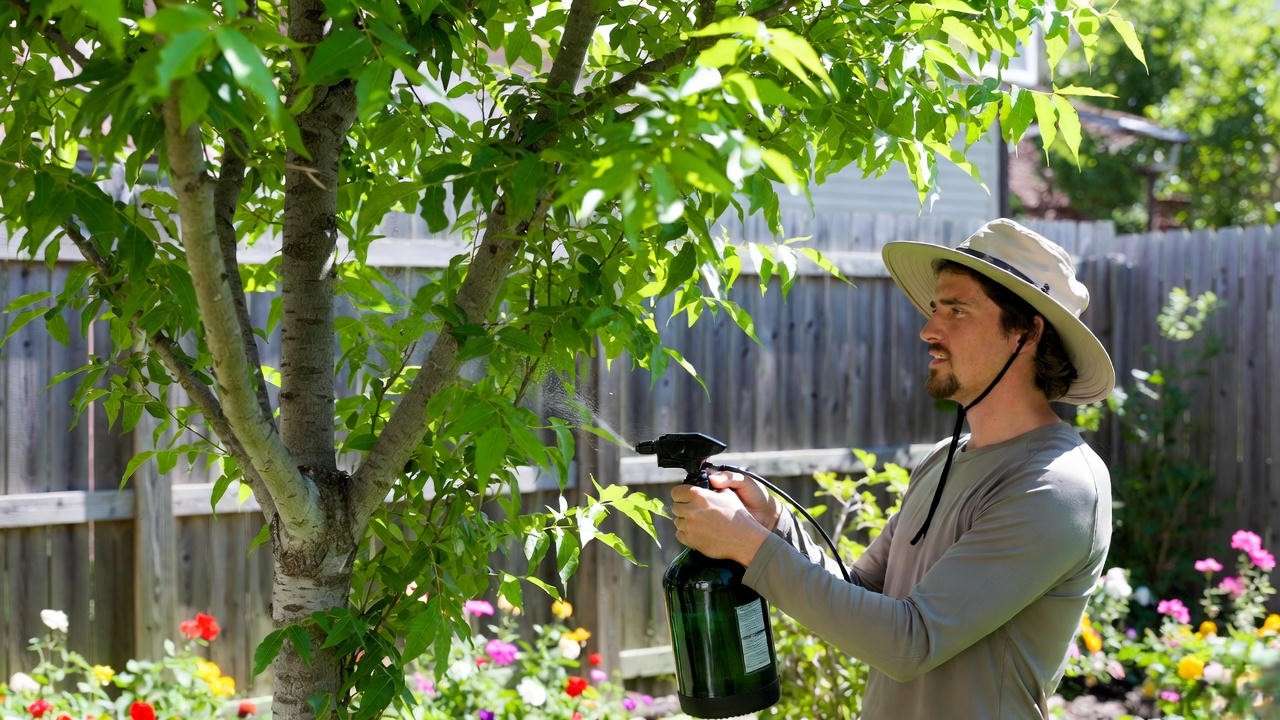
Tip 7: Mulch for Health and Beauty 🍂
Mulching is a simple yet powerful practice that protects your Gurneys trees from environmental stresses while enhancing your garden’s aesthetics.
Benefits of Mulching
A 2-4 inch layer of mulch around the base conserves soil moisture (reducing watering needs by up to 50%), suppresses weeds that compete for nutrients, and insulates roots against temperature extremes. For Gurneys fruit trees like the Honeycrisp apple, mulch also promotes microbial activity in the soil, boosting nutrient uptake.
Mulching Do’s and Don’ts
- Do: Apply organic materials like wood chips, shredded bark, or compost in a 3-4 foot radius around the tree.
- Don’t: Pile mulch against the trunk (this causes “volcano mulching” and invites rot or pests). Leave a 2-3 inch gap.
- Refresh Annually: Top up mulch in spring to maintain effectiveness. Pro Tip: In hot climates, light-colored mulch reflects heat, keeping roots cooler for trees like Gurneys’ Frost-Proof Peach.
Tip 8: Support Young Trees for Stability 🌬️
Young Gurneys trees are vulnerable to wind, storms, and uneven growth without proper support. Staking ensures they develop straight trunks and strong roots.
Why Staking Is Important
Staking for the first 1-2 years prevents leaning or uprooting, especially in exposed backyards. It’s crucial for taller varieties like Gurneys’ Norway spruce or dwarf fruit trees in windy areas. Without it, trees may develop weak, crooked trunks that fail later in life.
How to Stake Properly
- Choose Materials: Use two sturdy stakes (bamboo or metal) driven 18-24 inches into the ground.
- Attach Flexible Ties: Secure the tree trunk loosely with soft fabric ties or rubber hoses to allow natural movement.
- Position Stakes: Place them outside the root ball, angled away from the tree.
- Check Regularly: Inspect ties monthly to prevent girdling (strangling the trunk). Remove stakes after 1-2 years once roots anchor firmly. Example: For a Gurneys dwarf apple tree, staking in a high-wind zone ensures upright growth for easier harvesting.
Tip 9: Monitor Seasonal Care Needs ❄️☀️
Gurneys trees thrive with year-round attention. Adapting care to seasons prevents issues and maximizes productivity.
Spring and Summer Care
- Spring: Bud burst signals increased watering and first fertilizer application. Monitor for aphids as new growth emerges.
- Summer: During heatwaves, water deeply every 5-7 days. Thin fruit on overloaded trees (e.g., Gurneys cherries) to prevent branch breakage. Prune lightly for airflow.
Fall and Winter Prep
- Fall: Reduce watering as leaves drop; apply a final mulch layer. Rake fallen leaves to deter fungal diseases.
- Winter: Wrap young trunks with tree guards to shield from sunscald, rodents, and frost cracks. For cold-hardy varieties like Gurneys’ Honeycrisp, this ensures survival in Zone 3 winters. Expert Tip: “Seasonal checklists keep care proactive,” says nursery manager Sarah Lee. “A well-prepped Gurneys tree emerges stronger each spring.”
Tip 10: Harvest and Enjoy Your Gurneys Trees 🍎
The ultimate reward! Proper harvesting extends your enjoyment and prepares trees for future seasons.
Knowing When to Harvest
- Fruit Trees: Pick when fully colored and slightly firm (e.g., Gurneys’ Stella cherries in mid-June; Honeycrisp apples in September). Taste-test for sweetness.
- Ornamental Trees: Collect seeds from cones (Norway spruce) or take cuttings for propagation in fall. Signs of ripeness: Easy detachment from the branch, full aroma, and no green hues.
Post-Harvest Care
- Clean Up: Remove fallen fruit to prevent pests.
- Prune Lightly: Trim spent branches to redirect energy.
- Store Properly: Keep apples in a cool (32-40°F), humid spot for up to 6 months. Fun Idea: Host a backyard harvest party! Share your Gurneys bounty with neighbors to foster community and get tips in return. 🌟
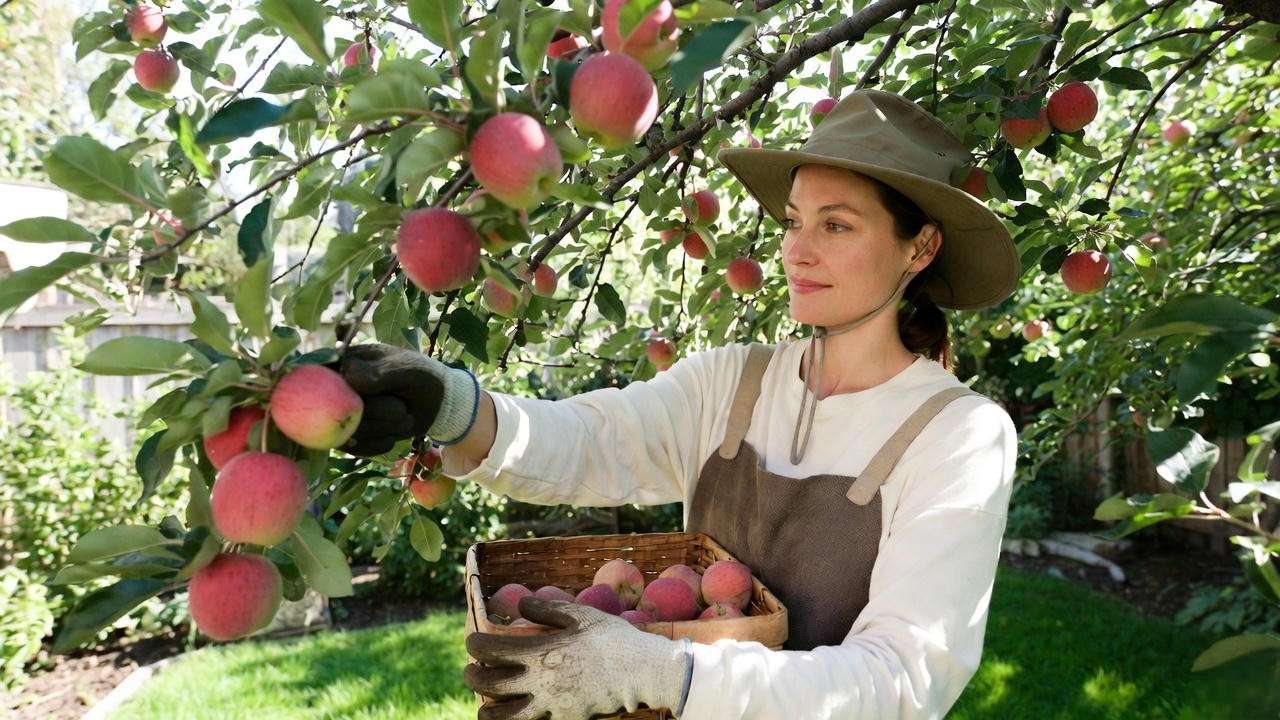
Bonus Section: Troubleshooting Common Gurneys Tree Problems 🛠️
Even with expert care, issues arise. Here’s how to diagnose and fix them quickly, saving your trees.
Why Isn’t My Tree Growing?
Common Causes:
- Poor soil drainage or compacted roots.
- Insufficient sunlight or nutrients.
- Transplant shock from improper planting.
Solutions:
- Conduct a soil test (kits from Gurney’s or extension services). Amend with compost if pH is off.
- Relocate if shaded; ensure 6+ hours of sun.
- Apply root stimulator and water consistently for 3 months. Case Study: A Gurneys peach tree stalled due to clay soil — adding gypsum improved drainage, sparking 2 feet of growth in one season.

Why Are My Leaves Dropping?
Common Causes:
- Water stress (drought or overwatering).
- Pests like spider mites or diseases like powdery mildew.
- Nutrient deficiencies (yellow veins indicate iron lack).
Solutions:
- Check soil moisture; adjust watering.
- Spray with neem oil for pests; fungicide for mildew.
- Foliar feed with chelated iron. Expert Insight: Early intervention is 90% effective. Snap a photo and consult Gurney’s support for precise ID.
Additional Troubleshooting Table
| Problem | Symptoms | Quick Fix | Prevention |
|---|---|---|---|
| Yellow Leaves | Wilting edges | Deep water weekly | Mulch + soil test |
| No Fruit | Few blossoms | Pollinator attractors | Cross-pollinate varieties |
| Cracked Bark | Sun exposure | Tree wrap | Shade cloth in youth |
| Insect Holes | Sawdust piles | Bt spray | Companion planting (marigolds) |
FAQs About Growing Gurneys Trees ❓
- How long does it take for a Gurneys tree to bear fruit? Typically 2-5 years for fruit varieties, faster with dwarfs (1-3 years). Proper care accelerates this — our tips ensure quicker yields!
- Can I grow Gurneys trees in containers? Yes! Dwarf varieties like Gurneys’ Columnar Apple thrive in 15-20 gallon pots. Use well-draining potting mix, fertilize monthly, and overwinter indoors in cold zones.
- What’s the best way to contact Gurney’s for support? Visit gurneys.com or call 1-800-513-0780. Their experts offer free variety-specific advice.
- Are Gurneys trees genetically modified? No — Gurney’s specializes in naturally bred, non-GMO trees for sustainable, healthy growth.
- How do I propagate my Gurneys tree? Take softwood cuttings in summer or root suckers. Gurney’s guides detail success rates up to 80%.
- What if my Gurneys tree arrives damaged? Gurney’s 1-year guarantee covers it — contact them immediately for replacements.
Conclusion: Your Path to Thriving Gurneys Trees 🌟
Congratulations! With these 10 must-know tips — from climate selection and proper planting to seasonal care and troubleshooting — you’re equipped to grow healthy Gurneys trees that transform your backyard into a productive paradise. 🌳 Remember, consistency is key: apply these strategies, monitor progress, and watch your trees flourish.

